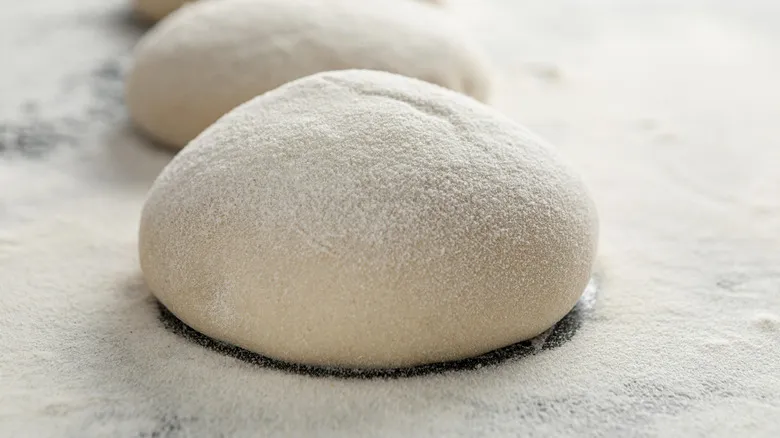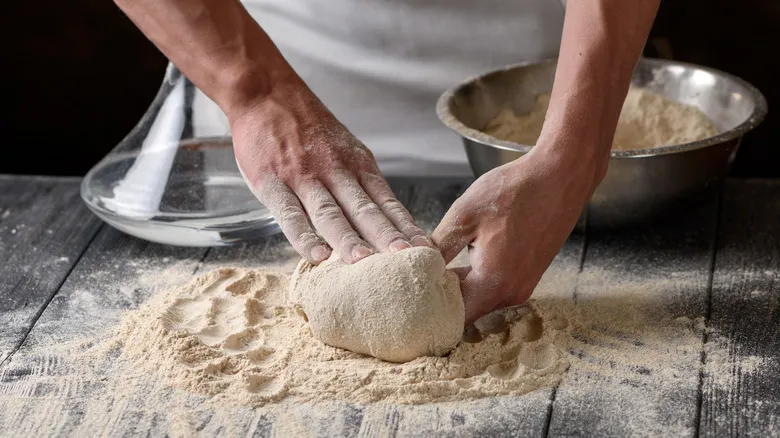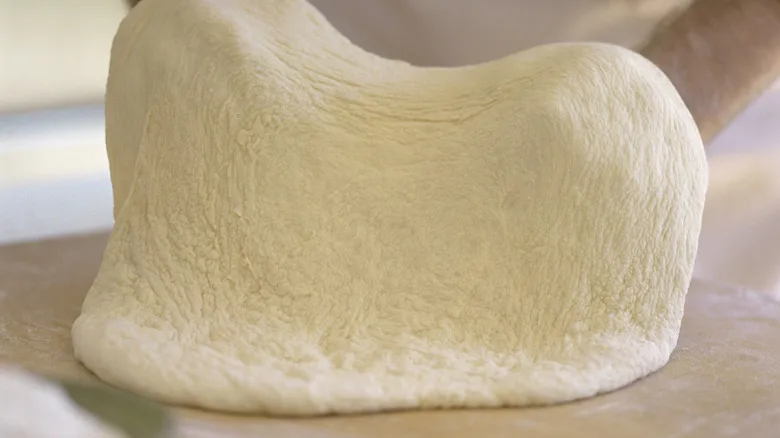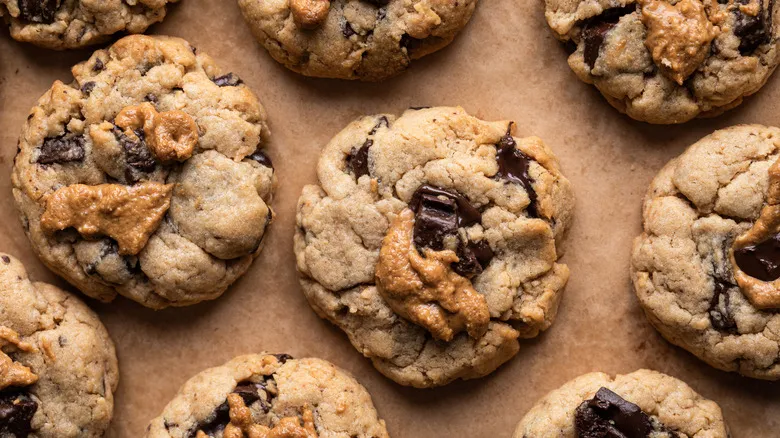How to fix wet pizza dough without adding flour

Nicole Bean points out that a frequent error home cooks make with pizza dough is "adding too much flour after the dough has been mixed." When you've combined all the ingredients and the dough still feels excessively wet and sticky, it can be tempting to immediately add more flour to resolve the issue. However, this can result in a pizza crust that is overly chewy. "If the dough feels too wet, adding extra flour will only make it tougher," she explains.
So, what should you do if your pizza dough is too wet and sticky to handle? Bean suggests a straightforward solution: give it some time. "The best way to avoid this mistake is to let your dough rest longer," she advises. Allowing the dough to sit for a bit can help it dry out enough to become more manageable without any additional effort. If that doesn't solve the problem, Bean recommends "folding it a few more times." This technique can help better incorporate the ingredients, but it must be done with care. Overworking the dough can lead to excessive gluten development from kneading, which will also result in a tough and chewy crust.
Why adding more flour makes your pizza crust tough

Creating pizza dough is all about finding the right balance. You need to achieve the perfect moisture content—neither too wet nor too dry. Additionally, it's important to manage the gluten levels. You want enough gluten to make the dough stretchy and elastic for proper shaping, but not so much that it turns tough, chewy, and unappetizing.
While adding extra flour can help prevent your pizza dough from becoming overly soggy, it can also increase gluten development, which can mimic the effects of over-kneading. Even if you're not incorporating more flour directly into the dough, using too much on your work surface when handling sticky dough can result in a thick crust that is tough, chewy, and more prone to burning. It's often better to allow the pizza dough to rest longer or even refrigerate it for a bit.
Why your pizza dough is too sticky to begin with

If you're curious about why your pizza dough turned out so wet and sticky, the answer is quite straightforward. The primary reason is likely an excess of moisture relative to the flour. Following a trusted pizza dough recipe, even one that includes yogurt, and ensuring your measurements are precise should help resolve this issue. However, keep in mind that results can vary. Just like with other types of dough, factors such as the humidity in your area can influence the final outcome and the amount of flour you need to incorporate initially. Unfortunately, the only way to address this problem is through trial and error.
There are additional reasons for sticky pizza dough that relate to specific techniques and ingredients. Insufficient kneading is a common issue: if you're kneading by hand, you should work the dough for about 15 to 20 minutes. The type of flour and its protein content can also affect your results; a strong flour that can absorb moisture is usually the best choice. And, as Nicole Bean points out, it's essential to allow your pizza dough ample time to rest.
Recommended

Little Debbie Snacks Are The Ultimate Shortcut For No Bake Cakes

The Best Way To Add Cereals To Cookie Dough According To Christina Tosi

Leftover Tortillas Are The Secret For Keeping Cookies Fresh

The Brilliant Technique Everyone Needs For Easy, Luxurious Tarts
Next up





